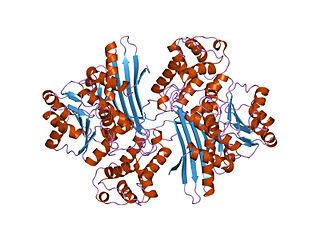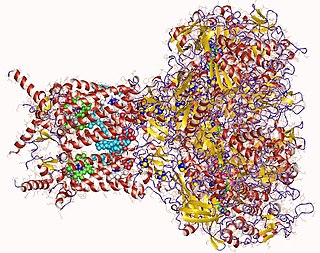This article needs to be updated. The reason given is: Is missing the recent classification changes resulting from the creation of EC 7.(February 2019) |
Enzymes are listed here by their classification in the International Union of Biochemistry and Molecular Biology's Enzyme Commission (EC) numbering system:
Contents
- Category:Oxidoreductases (EC 1) (Oxidoreductase)
- Category:EC 1.1 (act on the CH-OH group of donors)
- Category:EC 1.2 (act on the aldehyde or oxo group of donors)
- Category:EC 1.3 (act on the CH-CH group of donors)
- Category:EC 1.4 (act on the CH-NH2 group of donors)
- Category:EC 1.5 (act on CH-NH group of donors)
- Category:EC 1.6 (act on NADH or NADPH)
- Category:EC 1.7 (act on other nitrogenous compounds as donors)
- Category:EC 1.8 (act on a sulfur group of donors)
- Category:EC 1.9 (act on a heme group of donors)
- Category:EC 1.10 (act on diphenols and related substances as donors)
- Category:EC 1.11 (act on peroxide as an acceptor -- peroxidases)
- Category:EC 1.12 (act on hydrogen as a donor)
- Category:EC 1.13 (act on single donors with incorporation of molecular oxygen)
- Category:EC 1.14 (act on paired donors with incorporation of molecular oxygen)
- Category:EC 1.15 (act on superoxide radicals as acceptors)
- Category:EC 1.16 (oxidize metal ions)
- Category:EC 1.17 (act on CH or CH2 groups)
- Category:EC 1.18 (act on iron–sulfur proteins as donors)
- Category:EC 1.19 (act on reduced flavodoxin as donor)
- Category:EC 1.20 (act on phosphorus or arsenic as donors)
- Category:EC 1.21 (act on X-H and Y-H to form an X-Y bond)
- Category:EC 1.97 (other oxidoreductases)
- Category:Transferases (EC 2) (Transferase)
- Category:EC 2.1 (transfer one-carbon groups, Methylase)
- Category:EC 2.2 (transfer aldehyde or ketone groups)
- Category:EC 2.3 (acyltransferases)
- Category:EC 2.4 (glycosyltransferases)
- Category:EC 2.5 (transfer alkyl or aryl groups, other than methyl groups)
- Category:EC 2.6 (transfer nitrogenous groups)
- Category:EC 2.7 (transfer phosphorus-containing groups)
- Category:EC 2.8 (transfer sulfur-containing groups)
- Category:EC 2.9 (transfer selenium-containing groups)
- Category:Hydrolases (EC 3) (Hydrolase)
- Category:EC 3.1 (act on ester bonds)
- Category:EC 3.2 (act on sugars - glycosylases)
- Function and clinical importance of some enzymes in category 3.2.1
- Category:EC 3.3 (act on ether bonds)
- Category:EC 3.4 (act on peptide bonds - Peptidase)
- Category:EC 3.5 (act on carbon–nitrogen bonds, other than peptide bonds)
- Category:EC 3.6 (act on acid anhydrides)
- Category:EC 3.7 (act on carbon–carbon bonds)
- Category:EC 3.8 (act on halide bonds)
- Category:EC 3.9 (act on phosphorus–nitrogen bonds)
- Category:EC 3.10 (act on sulfur–nitrogen bonds)
- Category:EC 3.11 (act on carbon–phosphorus bonds)
- Category:EC 3.12 (act on sulfur–sulfur bonds)
- Category:EC 3.13 (act on carbon–sulfur bonds)
- Category:Lyases (EC 4) (Lyase)
- Category:EC 4.1 (carbon–carbon lyases)
- Category:EC 4.2 (carbon–oxygen lyases)
- Category:EC 4.3 (carbon–nitrogen lyases)
- Category:EC 4.4 (carbon–sulfur lyases)
- Category:EC 4.5 (carbon–halide lyases)
- Category:EC 4.6 (phosphorus–oxygen lyases)
- Category:Isomerases (EC 5) (Isomerase)
- Category:EC 5.1 (racemases and epimerases)
- Category:EC 5.2 (cis-trans-isomerases)
- Category:EC 5.3 (intramolecular oxidoreductases)
- Category:EC 5.4 (intramolecular transferases -- mutases)
- Category:EC 5.5 (intramolecular lyases)
- Category:EC 5.99 (other isomerases)
- Category:Ligases (EC 6) (Ligase)
- Category:EC 6.1 (form carbon–oxygen bonds)
- Category:EC 6.2 (form carbon–sulfur bonds)
- Category:EC 6.3 (form carbon–nitrogen bonds)
- Category:EC 6.4 (form carbon–carbon bonds)
- Category:EC 6.5 (form phosphoric ester bonds)
- Category:EC 6.6 (form nitrogen–metal bonds)
- Other list of enzymes








